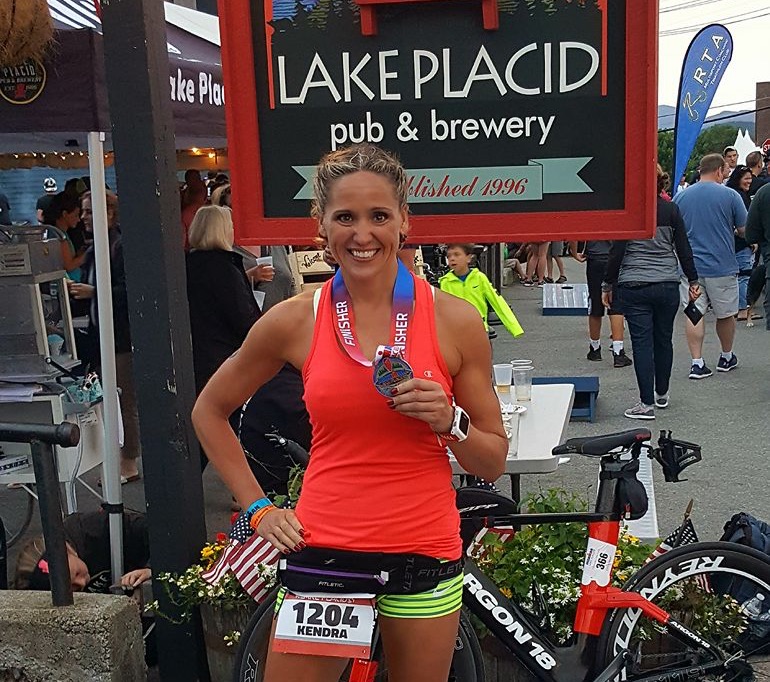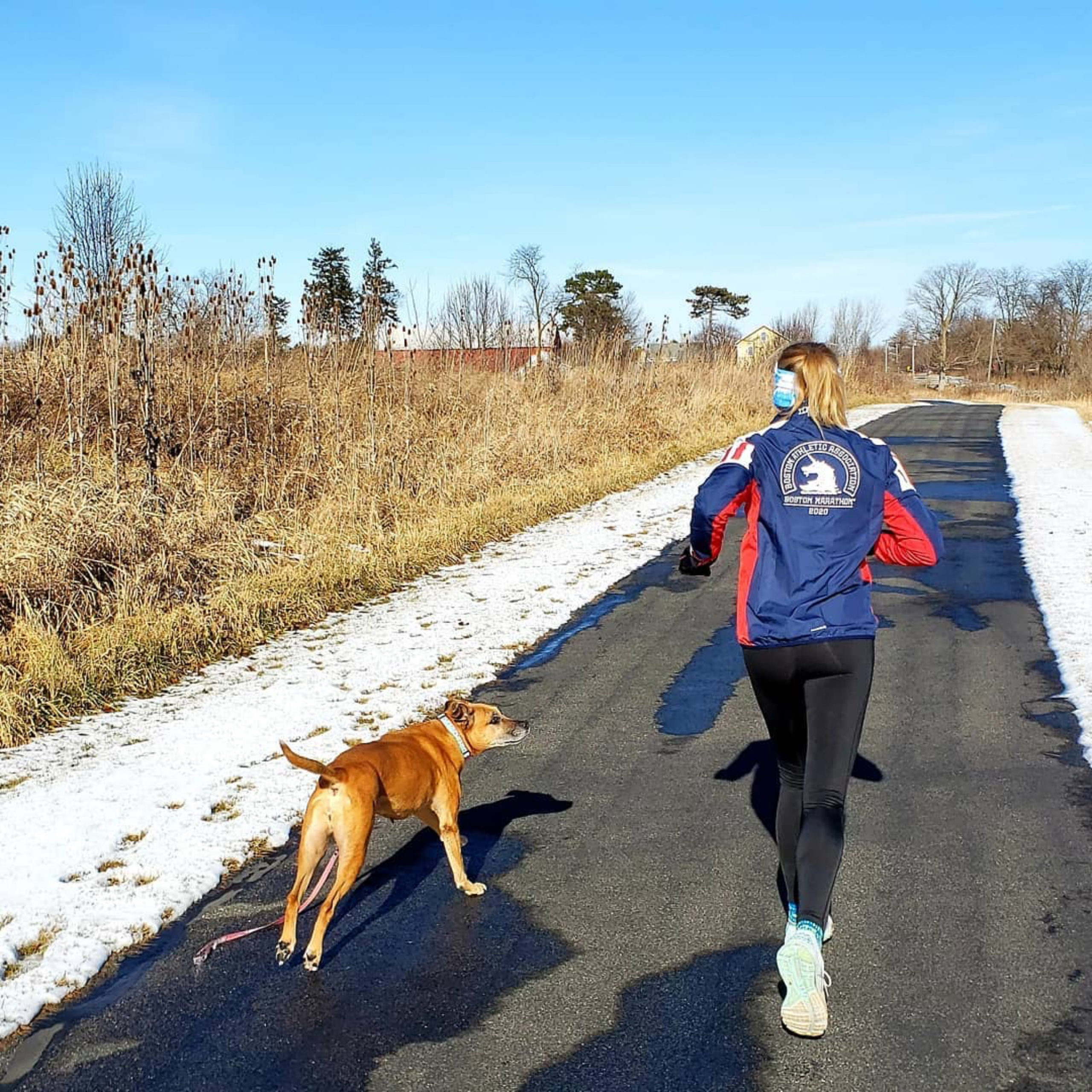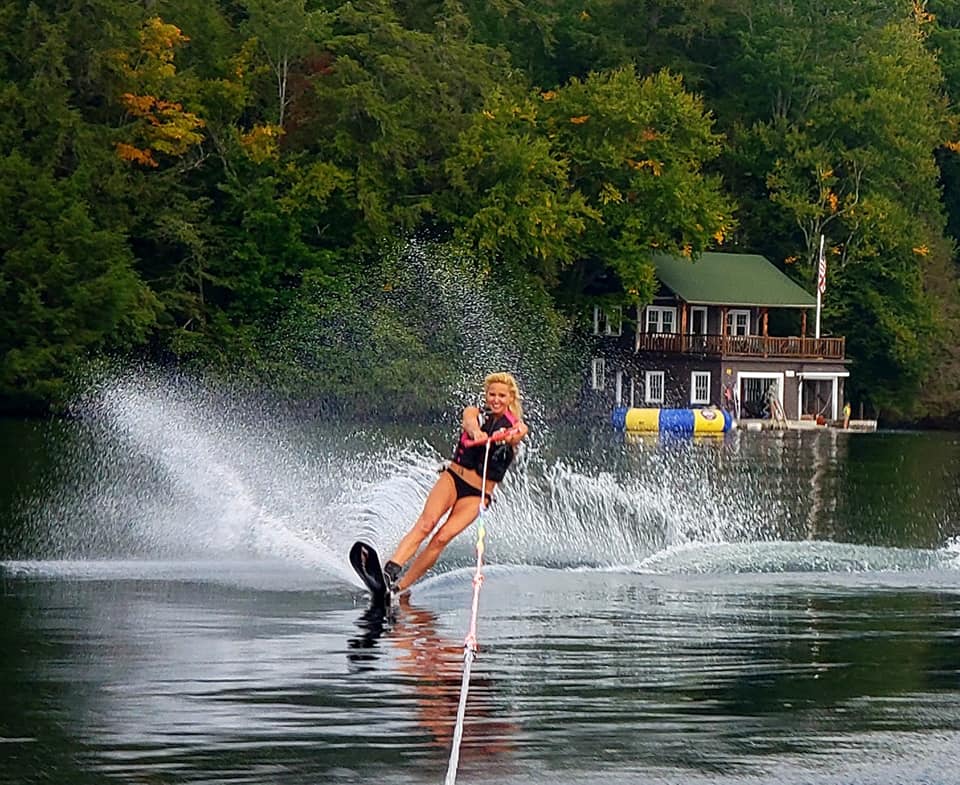Sometimes Taking a Step Forward Means Taking a Look Back
AgeGrouper Kendra Frigo shares how she conquered her fear of open water using a multi-step approach.

Triathletes are very driven individuals, able to push through pain, discomfort and seemingly impossible obstacles. But what happens when those obstacles are not physical, but mental? Kendra Frigo, age group triathlete and runner, shared her experience navigating an intense, crippling fear of the water, particularly, open water.
Frigo is a highly accomplished endurance athlete, having run over 25 marathons including four Boston qualifiers. Through running, she puts her miles to work, fundraising for TEAM PAWS, an organization dedicated to giving homeless pets a second chance at life.
The marathons were fulfilling, but Frigo was always looking for the next great endurance challenge.
In 2015, Frigo watched her brother race the Ironman Wisconsin 70.3. She was excited by this new style of racing and decided to give it a try. She put marathon training aside and focused her energy on building up her cycling and swimming abilities. “I knew I had trouble with water from the first time I got in the pool,” said Frigo.
This was highly unexpected given that Frigo was no stranger to water sports, having been a recreational swimmer and scuba diver.
“I would hyperventilate every time I put my face in the water. I was only able to swim one length of the pool because I’d be so out of breath from struggling too hard by the time I got to the other side.” Shared Frigo, “I was breathing in too much, even though I felt like I couldn’t get enough air.”
This fear not only plagued her triathlon career, but it turns out it affected many other aspects of her life as well. “I had an intense fear around not being able to breathe. The dentist, roller coasters, getting an MRI all would all result in this panic.”
Rough waters
Despite her challenges, Frigo was determined to add triathlete to her endurance sport resume. Armed with only her determination and the experience of one sprint triathlon completed in 2007, which she recalls, “was a very bad experience,” Frigo signed up for her first half and full Ironman races.
“During my first Ironman, Lake Placid in 2017, I got 100 yards in and flipped over. I ended up
backstroking the entire time.” Frigo said, “It was such a miserable experience that I almost quit triathlon altogether.”
Light at the end of the tunnel
Despite her aversion to the swim, and negative experience in Lake Placid, she continued to push herself and compete in triathlons. In 2021 while training for Ironman Chattanooga, she came across a post on the Ironman Chattanooga Facebook group from Mental Performance Coach, Neil Edge. He had posted an article about his 1 to 1 online course for overcoming open water swim panic. “It was one week out from Chattanooga and I immediately reached out,” said Frigo.
“This is a structured course,” shared Edge, “that is designed to be done over four weeks. There are multiple teaching points and exercises that athletes are meant to do as homework.” Frigo had six days until her race. “I told him let’s do it in a week,” Frigo said.
This could be the help she so desperately needed. She was a natural runner, had a strong bike and was physically adept in the water. Her mental block—this intense fear and inability to catch her breath—was debilitating. Something had to change and she hoped Edge could help.

Going backward to go forward
Over the five days leading up to her race, Frigo quickly and eagerly progressed through this intensive curriculum. “It was a multi-step approach, breathing exercises, positive affirmations and even some psychotherapy to get down to the root cause of my fears.”
“One of the first steps is to fold a piece of paper down the middle, on one side write down all of your fears, of which I had a lot. Then on the right side you would write a counter statement to those fears in the form of a positive affirmation.”
Frigo realized through this exercise that the source of her swimming fears actually stemmed from trauma from when she was younger. Understanding the root cause helped her better manage the feelings as they cropped up in other aspects of her life.
| Fear | Affirmation |
| I can’t breathe | I can breathe fine |
| I panic when I swim | I feel calm and strong |
| I’m disappointed with how poorly I swim in races | I’m proud of what I’m achieving |
| I get nervous in open water | I’m confident in the water |
| My wetsuit constricts my breathing | I have space in my wetsuit to breathe |
| I hyperventilate in the water | I am able to breathe deeply and calmly |
| I hate swimming | I love water sports. Freestyle swimming is just another water sport |
The next step was to develop neural pathways for these positive affirmations to take effect. Edge explained, “There are five brain states which we operate in. The theta state is one of deep relaxation and inward focus. It occurs within the first 3 to 5 minutes of waking and falling asleep. This state is when our brain is most receptive to cognitive stimuli.”
Edge has his clients capture these theta sessions and repeat their positive affirmation statements only. “Essentially we are rewiring the brain to focus on the affirmation instead of the fear,” added Edge.
Preventative and proactive
The next stage of the course focused on physical tactics that Frigo could utilize to minimize external stressors and build internal confidence.
Edge shared, “Simple things like staying away from fearful people can have a huge impact.” He advises athletes to stay off of social media groups leading up to a race as they tend to be full of anxious people sharing their fears.
“Practicing box/belly breathing was very effective for me,” said Frigo. “When you panic, you breathe very shallow, so focusing on deep belly breathing helps calm you down, plus, that’s how you’re supposed to breathe when you’re swimming.”
Box breathing:
- Breathe in for four seconds
- Hold for four seconds
- Breathe out for four seconds
- Hold for four seconds
The final step included creating a full game plan for race day, including the crucial pre swim warm up. Edge shared, “Three hundred to 500 yards into any exercise, your heart rate elevates. With swim, we need to adjust this to reduce the panic. The fewer surprises the better.”
In Chattanooga, there was no swim warm up so Frigo had to do her warm up on dry land. She shared some of her tactics, which included:
- Meditation in the morning to calm the nerves and get into the right mindset
- Walk down to the water’s edge and box/belly breathe upon arrival to the course
- State her positive affirmations and breakdown fears vs. reality
- Elevate her heart rate five to 15 minutes before the race by jogging in place
- Another round of box breathing before the start
- Count to 100 upon entering the water to focus the mind on numbers vs. fear
- Execute race plan

The proof is in the pudding
That day, Frigo had the best swim performance of her life. “Once I got past the danger zone which is the first three to five minutes, I got competitive.” She ended up with a 1:01:12 swim split and finished 8th in her age group overall.
“Kendra made it easy for me,” said Edge. “I knew right away that it would work. But that’s my job, to find a way for each unique person to implement what will work for them.”
He added, “Before I go ahead with anyone, I need to make sure I’m 100% confident that they will implement the steps in the program. I’ve turned away athletes who I didn’t feel sure would.”
Since going through this course, Frigo has seen tremendous improvements across the other areas of her life that this deep rooted fear would affect. “Since Chattanooga I’ve had a number of swimming events with no more fear. Neil and I have continued to work together and as a result of this, I no longer have fear of MRI’s, flying, or the dentist.
In open water events, she still does her exercises, but she says, it’s not out of necessity, it’s simply second nature.

